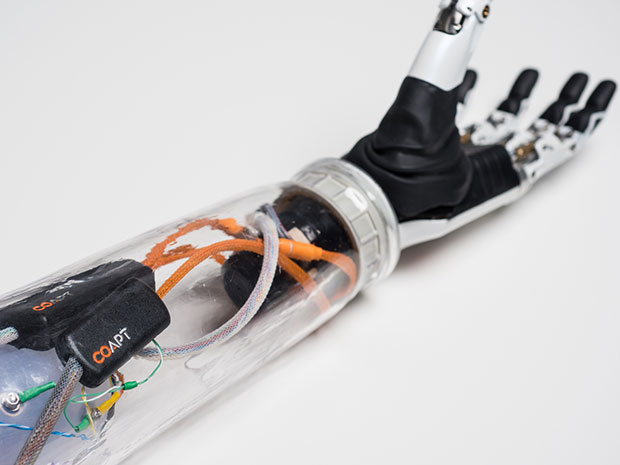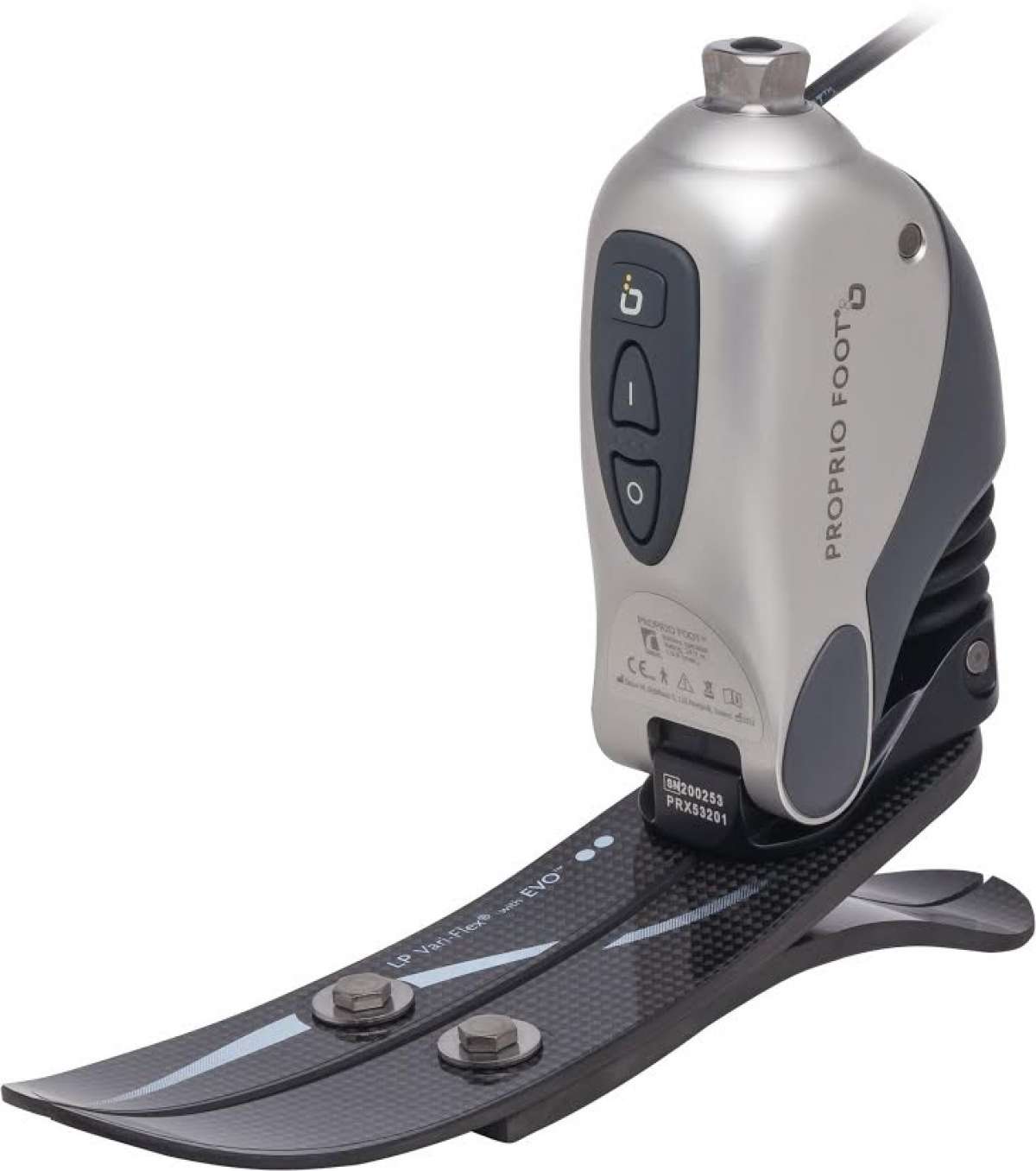The bionic prosthetic arm is now capable of fulfilling the owner’s mental instructions.

Jodie O'Connell-Ponkos lost her hand during the careless handling of an industrial meat grinder. It happened in 1985. Almost immediately, she received a prosthesis, and wore it for several years. All this time, the girl hated her artificial hand, and once just threw it away. Since then, she has not used other prostheses for 20 years.
She is not the only one who is not too disposed to prostheses. Many people who have lost a limb refuse to wear artificial limbs, so the story of Jodi is not out of the ordinary. Amputee patients refuse both conventional prostheses and advanced servo systems. The percentage of failures from modern systems, according to statistics, reaches 75%.
One of the reasons is that a number of new prostheses use modern materials, powerful servo drives and improved fasteners. But the control system of most artificial limbs was developed in the 1950s. And since then, little has changed. Most of these prostheses use fairly simple control systems. Only the most advanced models are equipped with sensors that can measure the electrical activity of the rest of the limb and react accordingly. Working with such prostheses requires solid practice and they are still inconvenient.
')
This year, O'Connell-Ponchos participated in a new medical program. She was offered to try a prosthesis of a new type, which can determine even a very weak signal of nerve endings, and not just muscles. Developed by Coapt prosthesis. This is a bionic system that performs almost all natural movements that the prosthesis owner only thought about.
The new prosthesis allows you to make complex movements that are synchronized with the movement of the other hand. Above the owner of the novelty showed that now she can tie her hair in a pony tail, without any problems.
Coapt entered the market in 2013. Now about 200 people use prostheses. The prosthesis is controlled by the built-in computer system, which analyzes the received electrical signals from the muscles and transmits them to the mechanical part of the prosthesis.
The difference of this prosthesis from other systems is the ability to recognize signals for each specific movement. Prosthesis designers compare a conventional myoelectric system with an audio system. Such a system, according to them, can only determine the volume of the music, but does not recognize individual compositions. Similarly, conventional prostheses - they perceive the signal, but do not distinguish what kind of movement exactly such a signal is responsible for.
The new prosthesis “understands” that this electric signal should use the fingers, and this one - the wrist. As a result, the prosthetic arm works in accordance with the user's thoughts. If he decided to take something in his hand, the prosthesis automatically responds to the signal. If the owner of the prosthesis wanted to fix his hair, the system performs the owner's intention. As mentioned above, the device from Coapt acts synchronously with the other limb, so that with the native and artificial hand you can perform coordinated actions.
Soon, Coapt is going to launch a more advanced second generation prosthesis. This year, the company received the right to use the technology developed at Purdue University . It allows you to read electrical signals directly from the skin, then converting these signals into commands to the mechanical system of the prosthesis.
Coapt is not the only company that develops complex bionic prostheses that respond to a person’s intention to do something. Not long ago, a complicated prosthesis received from DARPA Melissa Loomis (Melissa Loomis), living in Canton (Ohio, USA).
Unlike the previous system, this prosthesis does not only respond to a mental impulse to action. The person using the development of DARPA, may even feel a touch to the subject. Loomis feels four of the five fingers of his artificial hand, as well as the palm.
The prosthesis itself consists of two parts: a transceiver attached to the nerve endings of a woman’s shoulder and the prosthesis itself with a receiver of signals. As soon as Loomis decides to move his limb, the receiver picks up signals in the nerve endings, decodes them and transmits them to the prosthesis. Bionic prosthesis responds accordingly, activating one or another servo drive system. The result - an artificial hand moves.
To work with the DARPA prosthesis, it was necessary to implant into the shoulder about 100 different contacts that connect the nerve endings of the shoulder with a transceiver and several temperature sensors.
Another bionic prosthesis, tested last year, copes down the stairs. It was developed in a research laboratory at the Chicago Rehabilitation Institute. The prosthetic leg automatically determines the type of action that the owner of the prosthetic leg is going to perform.
To do this, the computer system of the prosthesis reads electromyographic signals using electrodes located in each of the 9 residual muscles of the remaining part of the limb. After that, 13 mechanical sensors embedded in the prosthesis will be activated. A special algorithm recognizes the signals, analyzes the patterns, and the system begins to act based on the situation.

Last year another thought prosthetic leg, called MyoElectric Sensor (IMES) , was introduced.
Specialists working on complex bionic prostheses, argue that the main obstacle to creating more advanced systems of this type is not the complexity of the mechanical and electronic parts of the prosthesis. The main problem is reading the signals that the brain sends. For example, if a person wants to raise his hand, about 500 million neurons are activated in his brain. Scientists can receive and analyze a simultaneous signal of a maximum of several hundred such neurons. “We have a lot going on in our head, but very few tools to analyze it all,” says Professor McLaughlin [McLaughlin], one of the participants in the Modular Prosthetic Limb (MPL) project.
Even in the most advanced systems like MPL or prosthesis from Coapt, a set of predefined motions is used. For example, pointing with a finger, clenching a fist, working with a brush and other movements is only from 6 to 8. A regular arm is much more functional than any of the most advanced modern prosthesis. But every month there are new, more and more complex and sophisticated systems. So, before the advent of a full-fledged mechanical arm, there may not be much time left.
Source: https://habr.com/ru/post/397861/
All Articles